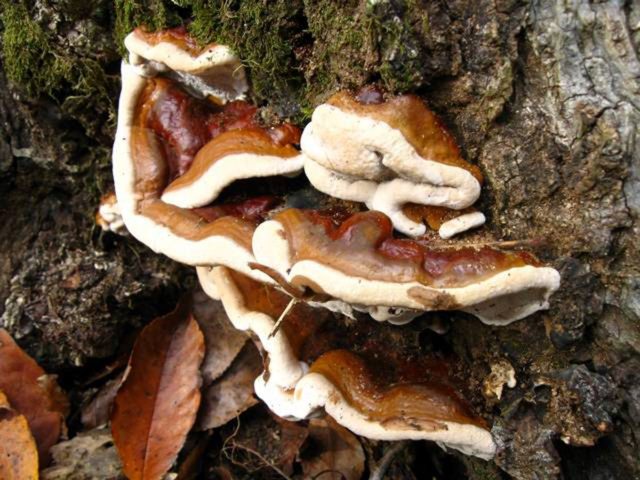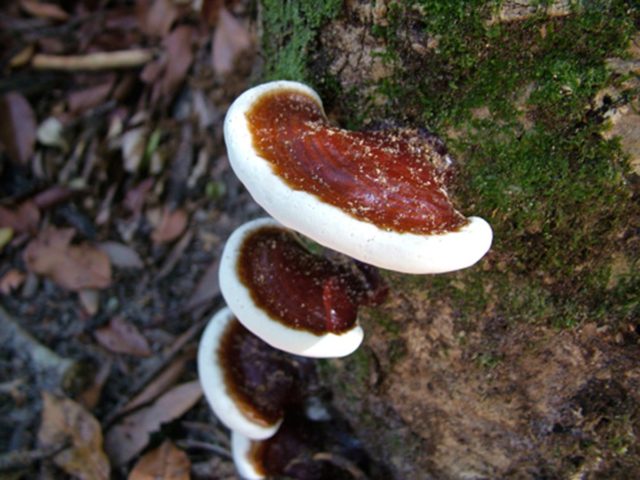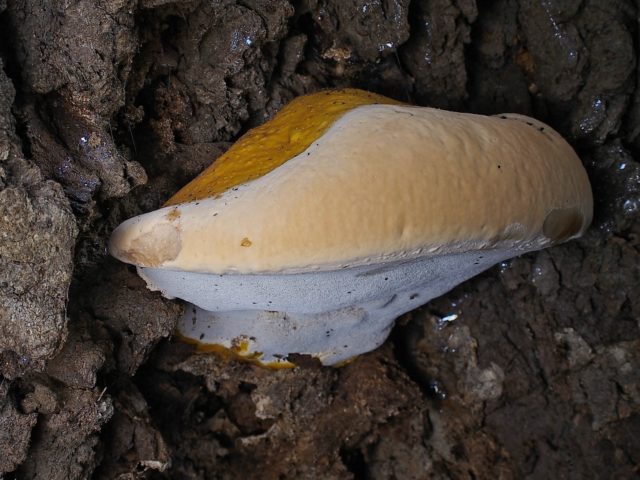Content
Ganoderma resinous is a representative of the Ganoderma family, the genus Ganoderma. Has other names: ashtray, ganoderma gum, lingzhi. This mushroom is a tinder one-year specimen, it is a cap, in rare cases with a rudimentary stem.
What does ganoderma resinous look like?
The hat of this specimen is flat, woody or cork in structure. Reaches a diameter of about 45 cm. The color of the fruiting body changes with age. So, in young mushrooms, the cap is red with grayish or ocher edges, then gradually acquires a brick or brown hue. Older specimens can be distinguished by their black color. At a young age, the surface is shiny, after which it becomes dull. The pulp is soft, similar in structure to cork, grayish at a young age, red or brown at maturity. Under the cap there is a hymenophore, the pores of which are round, gray or cream-colored. Elongated tubules, the size of which reaches about 3 cm, are arranged in one layer. The spores are brown, slightly truncated at the apex and covered with a two-layer shell.
Where ganoderma resinous grows
The favorite habitats of this species are coniferous forests, especially where larch and sequoia grow. It is also quite common on oak, alder, beech, willow. As a rule, it grows in the lower part of the dead wood trunk. If a given specimen begins its development on a living tree, then soon it dies, since resinous ganoderma is a saprophyte. Also found on the ground, dead wood, dry wood and stumps.
It is a rare guest on the territory of Russia, the mushroom is much more common in the Caucasus, Altai, the Far East and the Carpathians. Fruiting takes place almost all summer and autumn before the onset of frost.
Is it possible to eat ganoderma resinous
Experts noted that the fruit bodies of the lingzhi contain a storehouse of useful vitamins and minerals, namely: phosphorus, iron, calcium, vitamins C and D. Despite the rich chemical composition, ganoderma resinous belongs to the category of inedible mushrooms. However, this mushroom is useful in medicine. Today in pharmacies you can find a variety of drugs from this instance: capsules, creams, toothpastes, shampoos and much more. From the mycelium and fruiting body of gandorema resinous, coffee and tea are produced that contribute to weight loss.
Healing properties
There are four main medicinal properties that this species possesses:
- Fights cancerous tumors.
- Eliminates allergies.
- Prevents upper respiratory tract diseases.
- Helps with cardiovascular diseases.
Conclusion
Ganoderma resinous has a fairly wide range of applications. Thanks to numerous studies, scientists have found that this instance helps to fight various ailments. That is why preparations based on this medicinal mushroom are quite common not only abroad, but also on the domestic market. You should know that resinous ganoderma has a number of contraindications. Preparations based on this ingredient are not recommended for oral administration to children, pregnant women and people with individual intolerance to the component.











